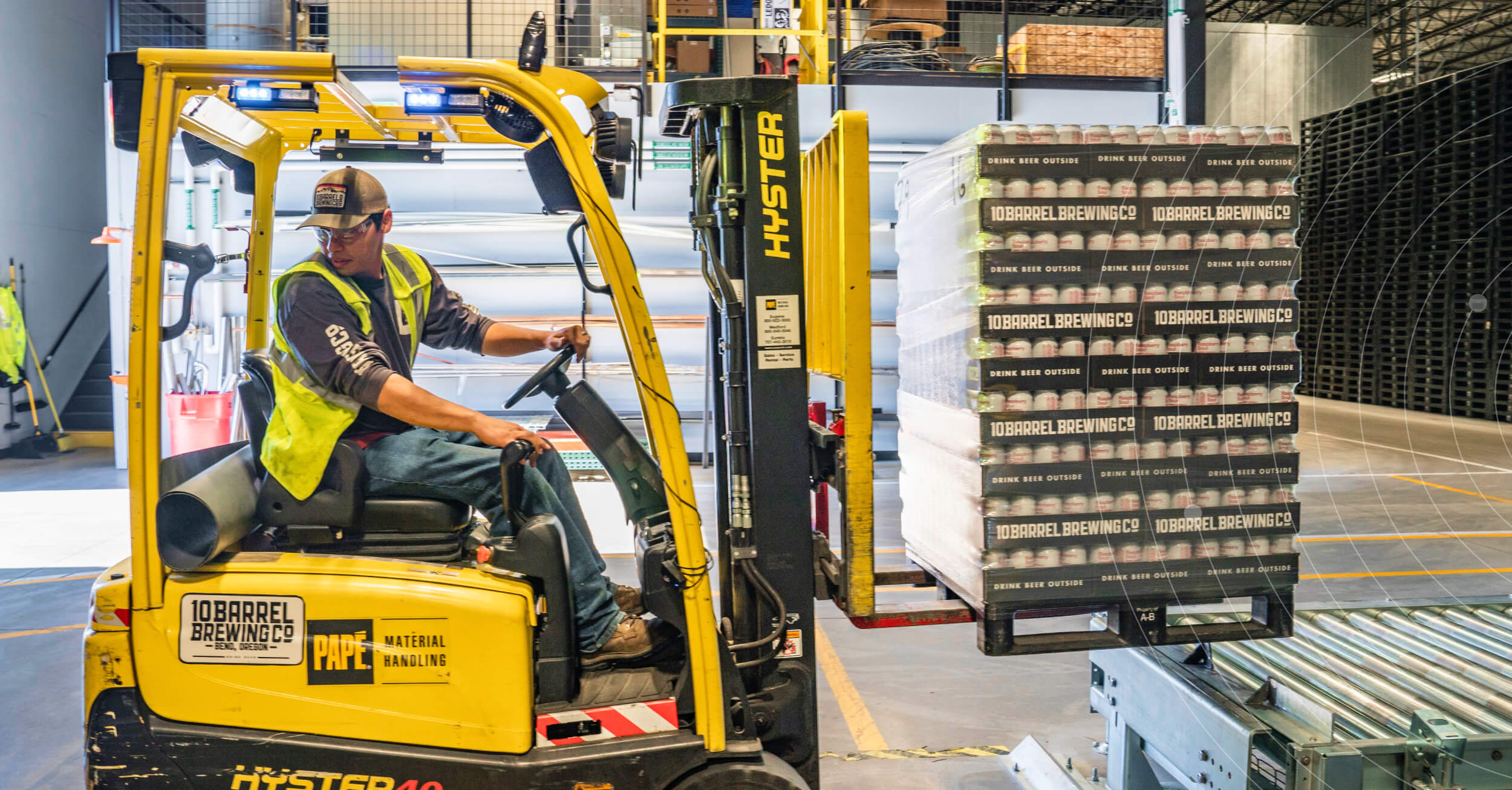
Inventory is the heartbeat of every retail brand. It encompasses three vital components: raw material, work-in-progress, and finished goods that drive sales and generate revenue. However, the art of inventory management is no small feat.
Navigating the diverse array of inventory types demands a strategic approach for each. In this insightful blog post, we delve into the various categories of inventory and unlock effective inventory management techniques for each one.
What is Inventory?
Inventory is the total amount of goods that an ecommerce brand has available to sell. The term “inventory” can mean a variety of things depending on the specific business. In general, it refers to any resource that has potential value but is not being used immediately; this could include raw materials, work in process inventory (goods being processed), finished goods inventory (completed products), or even accounts receivable (money owed by customers).
Inventory is an important asset for any business, but it is especially important for ecommerce businesses, as they need to be able to quickly fulfill customer orders.
Importance of Inventory Management
It is important for a brand to manage its inventory levels carefully. Too much inventory can lead to high costs, such as storage and insurance costs. Too little inventory can lead to stockouts, which can frustrate customers and cause the brand to lose sales.
Common Types of Inventory
There are many different types of inventory, but the most common types for ecommerce businesses include raw materials; work-in-progress; finished goods; and maintenance, repair, and operating supplies.
Raw Materials
Raw materials inventory is the inventory that is used to produce finished goods. It includes materials such as fabric, wood, metal, and plastic. Raw materials inventory is important for ecommerce businesses that manufacture their own products.
Work-in-Progress (WIP)
Work-in-progress or work-in-process inventory is the inventory that is still in the production process. It includes products that have been partially manufactured but are not yet ready to sell. Work-in-progress inventory is important for ecommerce businesses that manufacture their own products, as it allows them to track the progress of their production process.
Finished Goods
Finished goods inventory is the inventory that is ready to be sold to customers. It includes products that have been fully manufactured and are packaged and ready to ship. Finished goods inventory is the most important type of inventory for ecommerce businesses, as it is the inventory type that generates revenue.
MRO Inventory (Maintenance, Repair, and Operating Supplies)
MRO Inventory includes items such as tools, spare parts, and cleaning supplies that are used to maintain and repair equipment and facilities.
Specialized Types of Inventory
Specialized inventory is a type of inventory that can be used to improve efficiency, reduce costs, and mitigate risk. Four common types of specialized inventory are safety stock, decoupled inventory, excess inventory, and theoretical inventory.
Safety Stock
Safety stock inventory is the inventory that is kept on hand to protect against unexpected events, such as increased demand or supply chain disruptions. Safety stock inventory is important for ecommerce fulfillment, as it allows the business to continue fulfilling customer orders even if there is a disruption in their supply chain.
Decoupled Inventory
Decoupled inventory is a type of inventory that is held separately from the main inventory stock. It is used to create a buffer between different stages of the production process or between different stages of the supply chain to mitigate the risk of disruptions to the production process or the supply chain.
Excess Inventory
Excess inventory is a type of specialized inventory that is surplus to the needs of a business. Excess inventory can be caused by a number of factors, such as inaccurate demand forecasting, changes in customer demand, or product obsolescence. Excess inventory can be a costly problem for businesses. It can lead to increased storage costs, product obsolescence, increased inventory turnover and or dead stock, and losses on sales of discounted products.
Theoretical Inventory
Theoretical inventory is the amount of inventory that a business should have on hand based on its sales history and forecasting data. Theoretical inventory is a valuable tool for businesses to use when planning their inventory levels. However, it is important to note that theoretical inventory is just a model. It does not take into account unexpected events, such as supply chain disruptions or changes in customer demand.
Ecommerce-Specific Inventory Models
Ecommerce-specific inventory models are designed to help online businesses manage their inventory more effectively. These models can help businesses to reduce costs, improve customer service, and increase sales. Two of the most common ecommerce-specific inventory models are dropshipping inventory and consignment inventory.
Dropshipping Inventory
Dropshipping inventory is a type of inventory model where the seller does not stock or own inventory. Instead, when a customer places an order, the seller forwards the order to their supplier, who then ships the product directly to the customer.
Dropshipping inventory is a low-cost and low-risk inventory model for ecommerce businesses. It is a good option for businesses that are just starting out or that have a limited budget. However, it is important to note that dropshipping businesses have less control over the shipping process and product quality.
Consignment Inventory
Consignment inventory is a type of inventory model where the seller agrees to sell products on behalf of the supplier. The seller does not have to pay for the products until they are sold.
Consignment inventory is a good option for businesses that want to sell a wide variety of products or that have a limited budget. However, it is important to note that consignment businesses have less control over their inventory level and profits.
Tips for Effective Inventory Management
Effective inventory management is essential for any business, regardless of size or industry. By carefully managing their inventory, businesses can reduce costs, improve customer service, and increase sales.
Maintain a Safety Stock
A safety stock is a buffer of inventory that is kept on hand to protect against unexpected events, such as increased demand or supply chain disruptions. Safety stock is especially important for businesses that sell essential products or that have long lead times for their raw material(s).
To determine the appropriate safety stock level, businesses should consider conducting an inventory analysis based on their historical sales data, forecasting data, and the risk of disruptions to their supply chain. For a deeper dive into the metrics that can guide your inventory decisions, explore our article on inventory management KPIs.
Use Cycle Counting
Cycle counting is a process of counting inventory on a regular basis, typically on a daily or weekly basis. Cycle counting helps to ensure that the given inventory level is accurate and that any discrepancies are identified and resolved quickly.
To implement cycle counting into their inventory system, businesses should divide their inventory into smaller groups and count each group on a regular basis. The frequency of cycle counts will vary depending on the inventory type and the risk of shrinkage.
Leverage Third-Party Logistics Providers
3PLs are companies that provide a variety of logistics services, including warehousing, transportation, and order fulfillment. 3PLs can help businesses to reduce their inventory management costs and improve their efficiency.
When choosing a 3PL, businesses should consider the 3PL’s experience, reputation, and services offered. Businesses should also make sure that the 3PL’s systems are compatible with their own systems.
How Flowspace Can Help with Inventory Management
Flowspace’s order fulfillment software makes it easy for brands to manage their inventory and orders. With Flowspace, brands can seamlessly connect their DTC and B2B sales channels, in one centralized dashboard. Flowspace’s platform integrates seamlessly with popular e-commerce platforms like Shopify, Magento, and WooCommerce, and offers retail-compliant EDI compatibility. This means that brands can manage their inventory and orders from one central location, regardless of where their sales are coming from.
Flowspace’s platform provides real-time inventory tracking, so brands can always see what products they have in stock and where they are located. This level of real-time inventory visibility helps avoid stockouts and ensure that they can fulfill orders quickly and accurately. Flowspace’s platform can send alerts when inventory count is low, so brands can reorder products before they run out.
Flowspace’s inventory control system can also help you forecast how much product you’ll need in the future based on historical sales data and other factors. This helps you avoid overstocking and save money on inventory costs.
Flowspace’s platform is scalable to meet the needs of businesses of all sizes. Whether you’re just starting out or you’re a large enterprise, Flowspace can help manage the order fulfillment process efficiently. Using advanced technology, Flowspace’s inventory management software is designed to be accurate and reliable and ensures that orders are picked and packed correctly and that shipments are delivered on time.
Contact Flowspace today to learn more about how their order fulfillment platform can help you optimize your supply chain.







